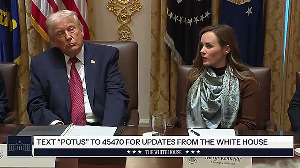The locals of Khonoma, the village of legendary Naga leader Angami Zapo Phizo, hope the Naga peace accord satisfies the aspirations of the Naga people. K Anurag reports.

There is a buzz in the village of Khonoma, Nagaland.
Khonoma, located around 20 kilometres from the state capital Kohima, is inhabited by the influential Angami tribe, who have shaped the history of the Naga movement.
After the Narendra Modi-led government signed the historic peace accord with the Nationalist Socialist Council of Nagaland-Isak-Muivah on August 3, this over 500-year-old village has come under the spotlight. The voice of Khonoma matters in Nagaland.
A visit to the village and interaction with villagers give the impression that they take pride in the fact that it was in Khonoma that the Naga rebellion took root many decades ago.
When asked what they think of the peace accord, some of them hope that the agreement will satisfy Naga aspirations else it could be rejected as it happened with the Shillong Accord of 1975.
Khonoma is the native village of the legendary Naga rebel leader Angami Zapo Phizo, the chairman of the Naga National Council that stoked the fire of rebellion in the 1940s.

On August 14, 1947 in Khonoma, Phizo declared an 'Independent Nagaland,' setting the stage for a long drawn out armed struggle with Indian security forces.
Khonoma was not only home to Phizo, but also home to other Naga rebel leaders including J B Jasokie, T Shakrie and Khrisanisa Seyie, the first president of the revolutionary Naga federal government.
An inscription on a monolith in Khonoma reads: 'Nagas are not Indians; their territory is not a part of the Indian Union. We shall uphold and defend this unique truth at all cost and always.' This has been attributed to Khrisanisa Seyie.
Khonoma is also where the invading British army faced maximum resistance between 1850 and 1879 in its efforts to take control of the Naga hills. Remnants of the Khonoma fort still stand tall.










